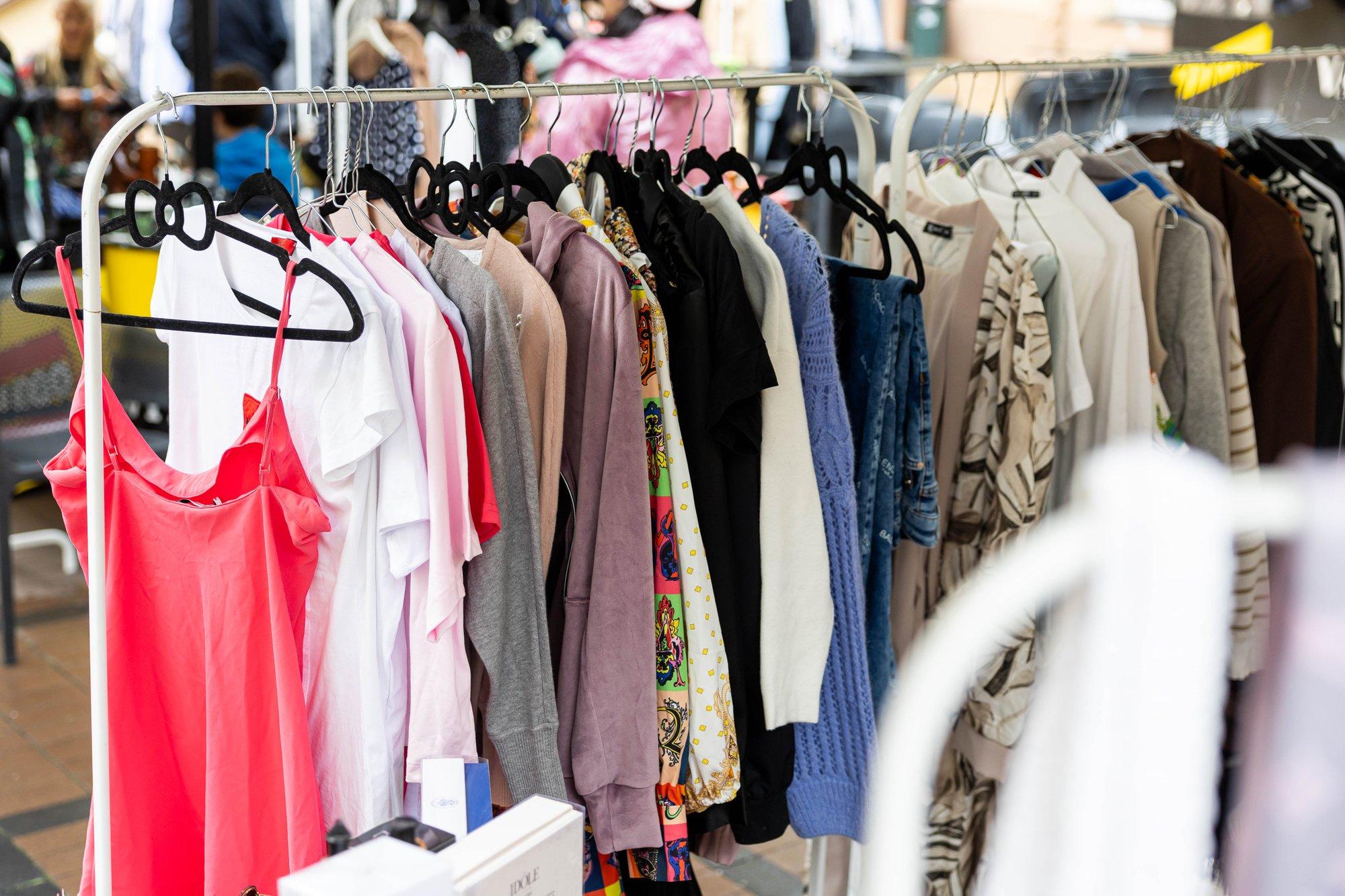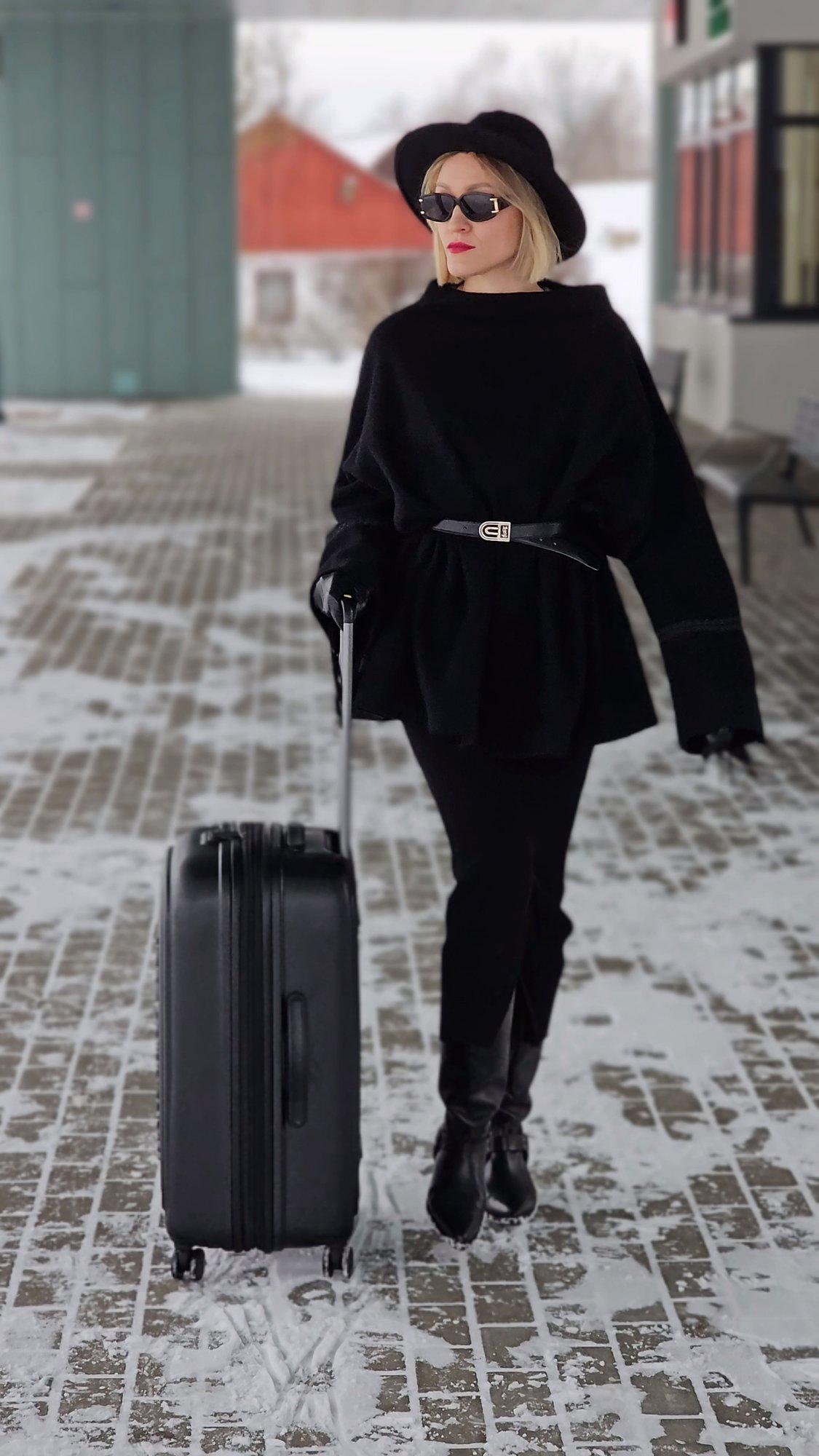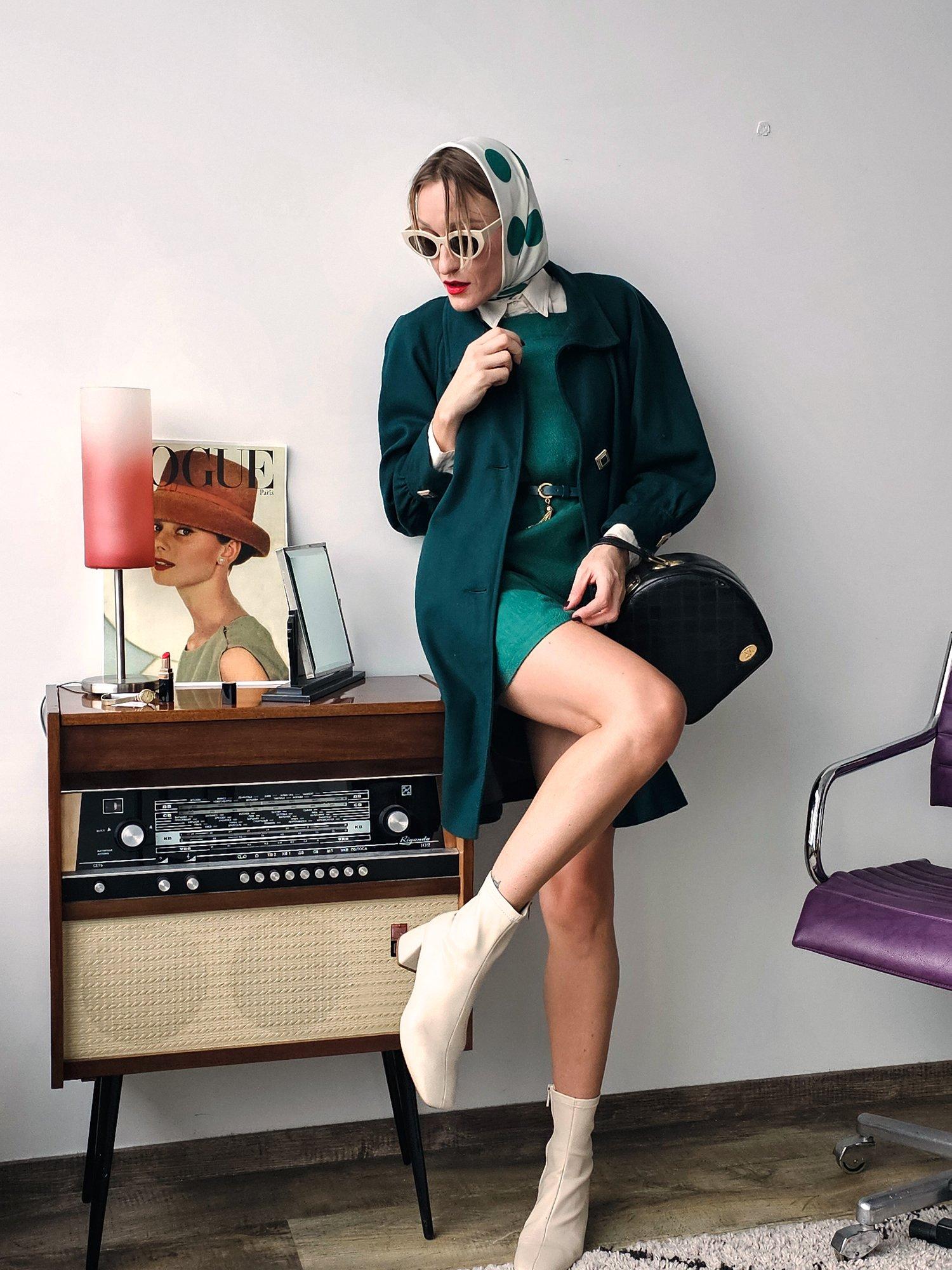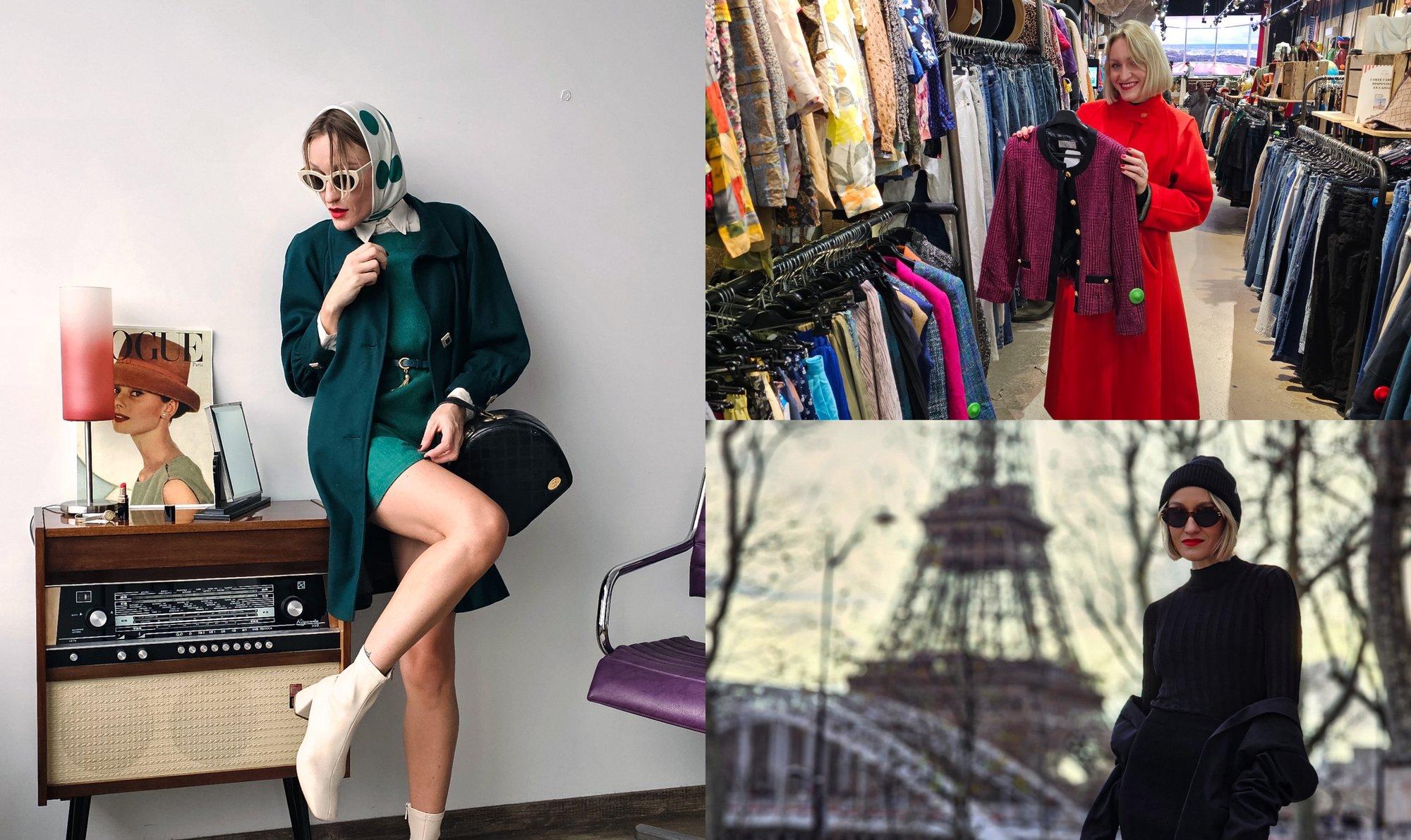Sustainable fashion – an integral aspect of lifestyle
Fashion enthusiast Pranckūnė introduces herself as Vintage Blonde. Her sense of style inspires thousands of social media users and even encourages some of them to make more sustainable choices. According to Vintage Blonde herself, sustainable fashion has been a significant part of her lifestyle since a very young age.
“I’ve been wearing second-hand clothes for as long as I can remember – back then, sustainable fashion was not even a concept. Today, sustainable, slow fashion gives me the satisfaction of knowing that by giving clothes a second life, I am not contributing to mass production. Moreover, by dressing others in such clothing, I might be positively influencing their habits,” shares Pranckūnė.
However, Pranckūnė admits that her lifestyle choices were strongly influenced by role models from her environment.
“My mother had the same hobby. When I was a teenager, my mother used to look very stylish every day, but nobody probably had any idea from where she got all these stylish clothes. Eventually, I started going to second-hand shops on my own, without my mother,” said Vintage Blonde.

A hobby that her mother introduced her to has become an essential part of Pranckūnė’s lifestyle – during her teenager years, clothes were the way to reveal her true colours.
“During my senior years, school hallways served as a catwalk for me. Clothes were my form of self-expression; I was obsessed by styling fabulous thrift store finds I hunted down after school. Some of the outfits were quite revealing or even extravagant. I’m glad I was one of the best students because my looks were garnering stares and comments from my teachers. I wonder what reaction I would have gotten if my academic results were poor,” she laughs.
Eventually, Pranckūnė’s beloved hobby caught the eye of thousands of followers on social networks. Today, on her Instagram account, she shares outfits she has given a second life and useful tips for every fashion enthusiast.
“There was another side of the coin – you simply cannot buy everything you find valuable for yourself, and not all sizes are suitable. For this reason, many years later, Vintage Blonde was born. Now I can fulfil my potential by pursuing my favourite hobby – to collect incredible thrift store finds and pass them on to others. During almost 20 years of digging, I think I have accumulated a lot of knowledge about brands, fabrics and so on. It’s rewarding to be able to use that knowledge doing the job that I truly love,” says Pranckūnė.
Today, Vintage Blonde is happy as her favourite activity can also earn her some money – she sells her best finds from the second-hand shops.
“It’s a hobby that occasionally earns me some money. I have other activities and responsibilities in my life that prevent second-hand fashion from becoming my sole source of income; for now, it’s my additional project. Maybe one day this will change,” Pranckūnė reveals.

According to Vintage Blonde, the clothes she finds interest a lot of people.
“People are quite keen to buy the clothes I offer. I don’t just sell the garment – I offer some outfit versions, and if I succeed in finding or knowing some facts, I also share the history of the brand or at least the era. People appreciate the emotion that comes with the garment. What fascinates me the most about this activity is the creativity involved – reviving vintage clothes in a contemporary context,” explains Pranckūnė.
Fashion goes round in circles
Pranckūnė’s cup of tea is vintage clothing, but, as she admits herself, in second-hand shops she looks not only for vintage pieces but also for garments with an equally important history.
“I don’t necessarily buy vintage clothes – mostly I look for quality, exclusiveness. These two qualities often accompany vintage clothes. In the past, fashion was much slower and much more materials, quality, and details oriented. That’s why vintage clothes often catch my eye,” explains Pranckūnė.

She also notes that the clothes she finds while looking for vintage gems today often reflect what people wear every day.
“Fashion goes round in circles. A lot of vintage clothes are very relevant in today’s fashion context – you often don’t even realise that you are wearing vintage clothes. And vice versa: fast fashion tends to imitate vintage styles,” said Pranckūnė.
It takes a lot of time and patience to discover something eye-catching and of certain value in second-hand shops, admits the young woman.
“I don’t necessarily buy something every time – the process of searching is key; I cannot do without it. I go to second-hand shops several times a week, and I also look online. If I’m in a different city, I will definitely visit some second-hand shops. The same goes for other countries – boutiques and thrift stores are my sightseeing. I visit France several times a year, so in Vintage Blonde’s wardrobe, you’ll find a lot of gems from Paris,” smiles Pranckūnė.

Start looking in the wardrobes of your mother and grandmother
According to vintage clothing enthusiast Pranckūnė, with plenty of second-hand clothing shops today, you can find everything you need there.
“You can really dress from head to toe there, but, of course, there are exceptions. For example, I usually buy only new white T-shirts. I also buy new shoes more often, but if I find them in very good condition or unworn, I buy them second-hand,” she shared.
Vintage Blonde also admits having some fast-fashion items in her closet.
“I am not trying to make an impression that I am better than I am and claim that I don’t own a single one fast fashion item. Of course, I have some. Most of the time, I go to these shops to look at the trends of the seasons and then I go to the second-hand stores in search for something similar. Most of the clothes in my wardrobe are second-hand or made in Lithuania,” says Pranckūnė.

And, as she pointed out, second-hand shops are not the only place to find something extraordinary – she advises looking closer at the clothes hidden in your mum’s or grandmother’s closets.
“I think that today fashion is so free and relaxed that many of the clothes worn by our mothers and grandmothers suit perfectly – they need just a bit of a modern twist. I would definitely pay attention to woollen coats, raincoats, jackets, quality trousers and, above all, accessories: belts, scarves, glasses, bags. God knows how enthusiastically I would dig into a wardrobe of some granny who used to be fashionista in her young days,” admits Pranckūnė.
Some valuable tips for trendy vintage buys
Although sustainable fashion is widely discussed and we have a wide range of second-hand clothing shops available today, many people still hesitate to start wearing sustainable clothing. To encourage and inspire people, Pranckūnė, who has been passionate about this topic for many years, has some tips.
“First of all, I would advise you not to buy just because it’s cheap and not to follow the “If I won't like it, I’ll throw it away because it’s only €5” principle. Think about it, would you buy this garment if it cost four times as much?” says Vintage Blonde and suggests paying great attention to the quality of the clothes.

“Second hand shops are not about poor-quality items, leave them. Instead, look for clothes with good composition because there are plenty of them; you just have to dig. Read the labels,” advises Pranckūnė and admits that finding the best options usually takes some time.
“If you want to find something, you have to look at everything. It’s not enough to just “take a peek” as you walk by. It takes patience and time. I look at and touch every single garment,” says Vintage Blonde and suggest doing some homework before going shopping in second hand shops.
“Before you go to a second-hand shop, make a list (at least in your head) of what you are looking for. Also, if trends are your thing, look at combinations online for inspiration. I find it very helpful,” admits Pranckūnė.

Importance of taking care
It’s true that buying quality garments is not enough. To make them last as long as possible, you also need to take proper care of them, and Vintage Blonde knows how to do that too.
“I invest a lot of attention to the clothes I sell. Of course, not all garments need special care – some of them only need to be washed and ironed, but others become real projects that the buyer may not know about: I sew the garment myself, I go to the tailor, I change buttons, I clean the wool and leather, I reshape woollen sweaters that have lost their original shape, I refresh the surface of woollen products,” Pranckūnė explains.
Based on her own experience, Pranckūnė advises following one important rule.

“My first advice is to choose clothes that are in perfect condition unless you really like the garment and are prepared to give it attention. As for care, as with any clothes, follow the care labels. It is essential,” she says.
Vintage Blonde adds a few more very important things.
“Wash woollen clothes only when they are already visibly stained; otherwise, it’s better to air them outdoors. Do not store clothes where they can be exposed to direct sunlight. Sunlight is particularly damaging to natural fabrics and genuine leather. I made some mistakes myself and damaged several valuable items. Well, as for vintage clothes, if they survived until this day and still look good, they will last for many years more. That alone makes them worth choosing,” adds Pranckūnė.

